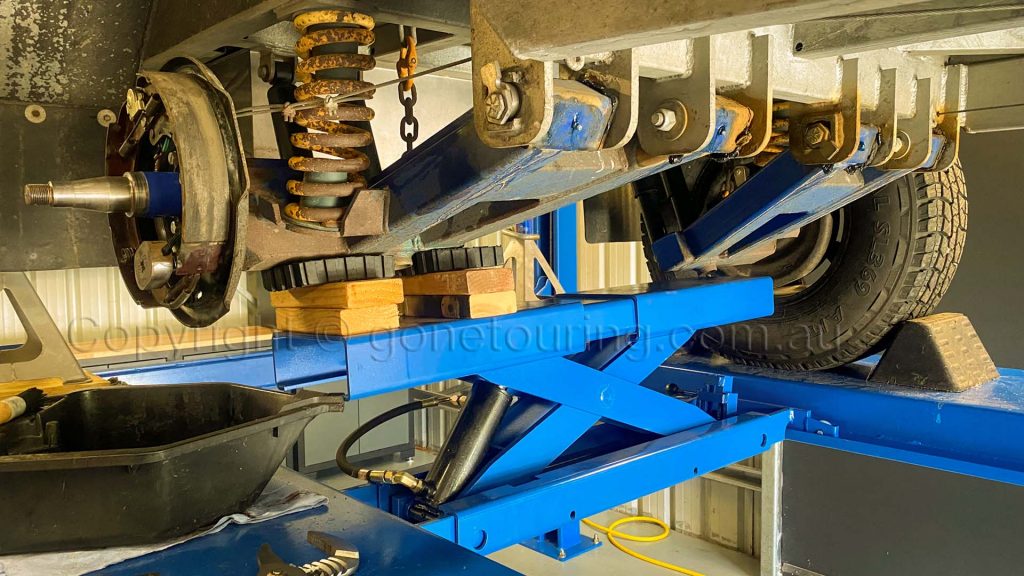If you’re new to camper trailers, here is one question you’ll undoubtedly ask yourself. “Is buying a used camper an economical alternative to purchasing a new one?” What are the pros and cons of buying a used camper, and what should you be looking for when purchasing? These are questions we asked Howard Shanks to report.
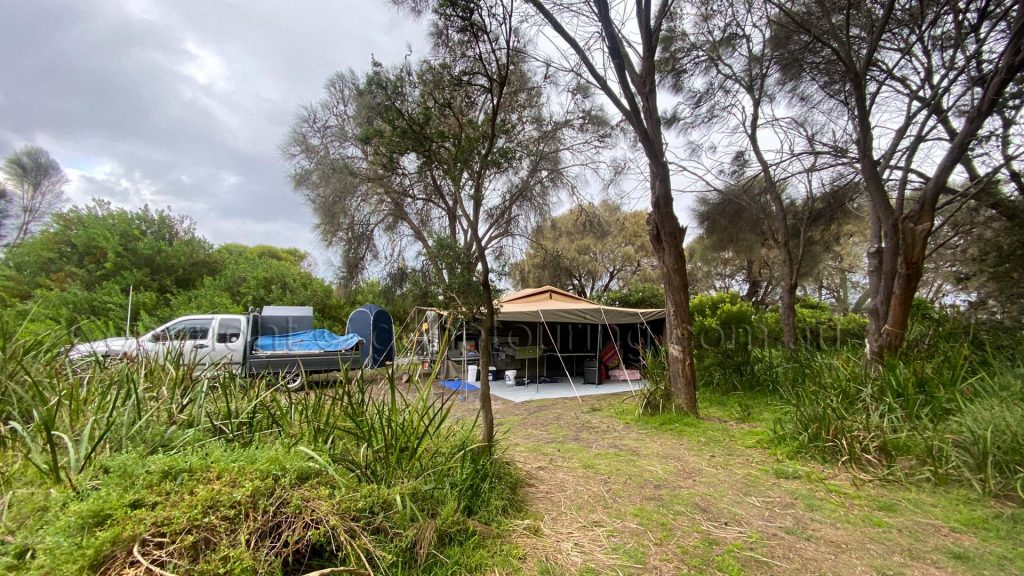
A used camper trailer is certainly a cost-effective stepping stone into the camper trailer scene, especially with a limited budget. Although a limited budget doesn’t necessarily mean you’ll miss out on all trimmings either because used campers typically come with a generous modicum of extras. Therefore, it’s well worth spending time researching your camper trailer requirements to narrow down a wish list of features that will meet your needs. Before rushing off to the used camper sales lot, don’t be afraid to include nice-to-have and must-have items.
Over the next few months, my wife and I jotted down everything we thought we’d want in a camper trailer. Over time we scribbled some items out and added others as our research matured.
Eventually, we finally stabilised the wish list of items, and our search narrowed down to a rear fold style camper trailer. My wife is not fond of creatures that slither and crawl around in the night, so understandably she was adamant that our camper includes a hard rear fold floor.
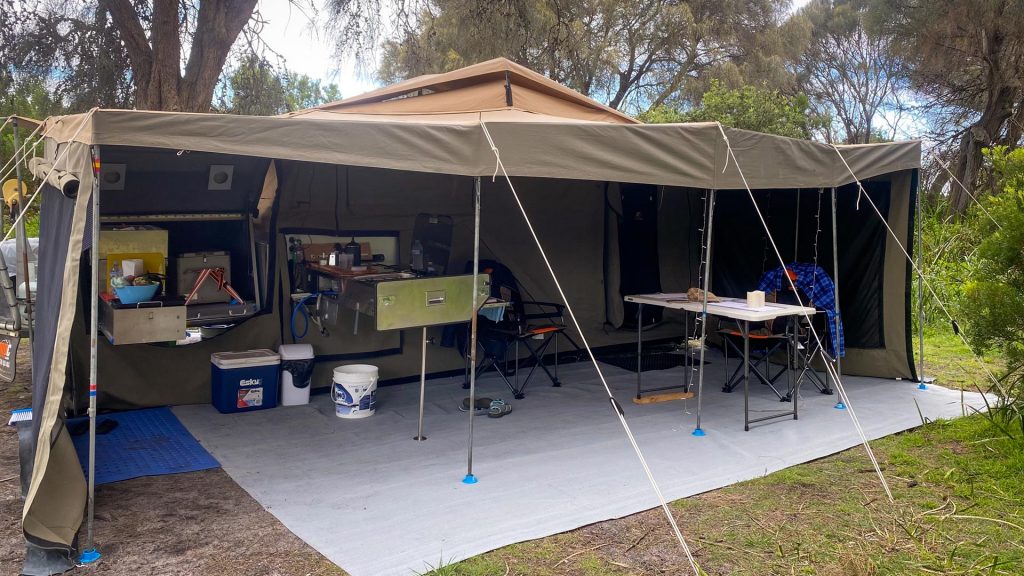 As luck would have it, we noticed an advertisement for a 2014 MDC Venturer Rear Fold camper trailer up for sale, only a few hours from home and, as a bonus, it was within our price range. We scheduled a viewing of the camper for the following day with the seller.
As luck would have it, we noticed an advertisement for a 2014 MDC Venturer Rear Fold camper trailer up for sale, only a few hours from home and, as a bonus, it was within our price range. We scheduled a viewing of the camper for the following day with the seller.
Fortunately, we were given some sound advice before our inspection. Gratefully this valuable advice insisted that we thoroughly inspect the condition of all the canvas and poles. Because if the canvas tent or awning were in poor shape with rips and tears or frayed stitching, then bringing the camper back into good weatherproof condition is an expensive exercise. On the other hand, the running gear is relatively inexpensive and easy to overhaul compared to repairing canvas. So, my wife and I agreed that we’d walk away and continue with our search if the canvas were in poor condition.

As promised, the seller had the camper set up prior to our arrival. Thankfully the main canvas was in good condition for its age, although there were minor repairs to the flyscreen door. The main awning walls looked brand new. The seller explained they always placed a generous number of Damp-rid containers and satchels in the camper when they packed it up and while in storage to stop mould build-up. And there was an abundance of evidence of this in all the cupboards and storage lockers.
In somewhat of a validation statement to the theory of investing in a used camper rather than a new one, for those new to this camping style, the seller described how they bought this camper from the previous owner 18 months ago as a trial much like we were. It had served them well, but as their family expanded, so did their camping needs and why they put this camper up for sale.
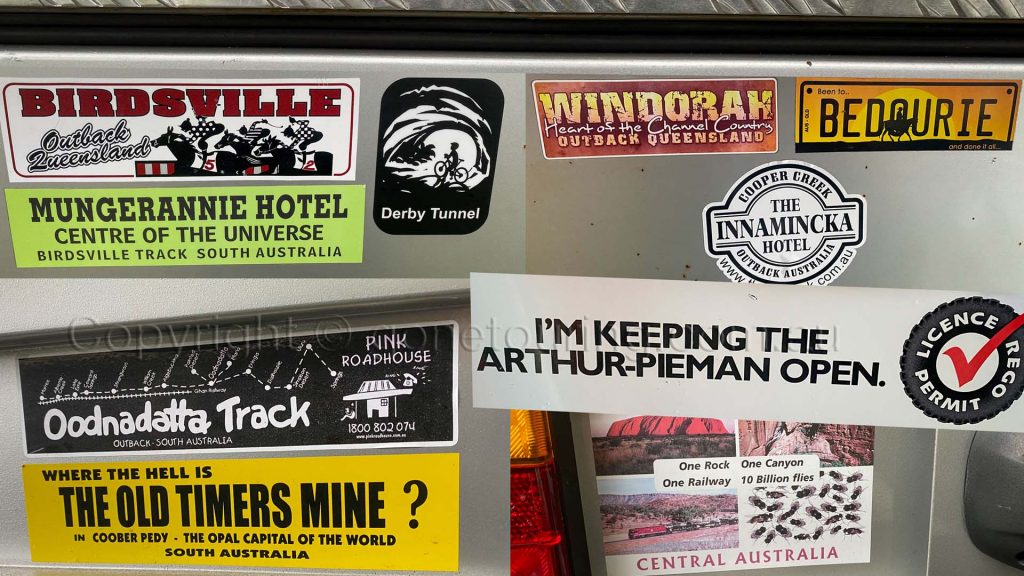
Judging by the collection of stickers adorning the sides of the trailer, the original owners had indeed enjoyed exploring most of Australia. A glance underneath the trailer revealed the galvanised MDC frame and independent suspension had unquestionably stood up well to the rigours of Australian Outback travel.
The 2014 MDC Venturer came packed with standard features that allow for comfortable off-grid camping. There are three 100AH batteries with an intelligent charger, USB charging ports, and 12-volt DC power outlets conveniently located around the trailer. A generous 120-litre water tank with a digital water level indicator. Full slide-out camp stainless steel kitchen with plumbed sink and electrically pumped cold water next to a 4-burner gas cooktop. The conveniently located slide-out pantry and fridge slide extends to form a U-shape galley kitchen when fully set up for cooking meals. At the rear is a pair of dual alloy spare wheels that help balance the trailer weight. Fully loaded with food, water, and all the gear for a week’s camping, the ball weight is 190kg.
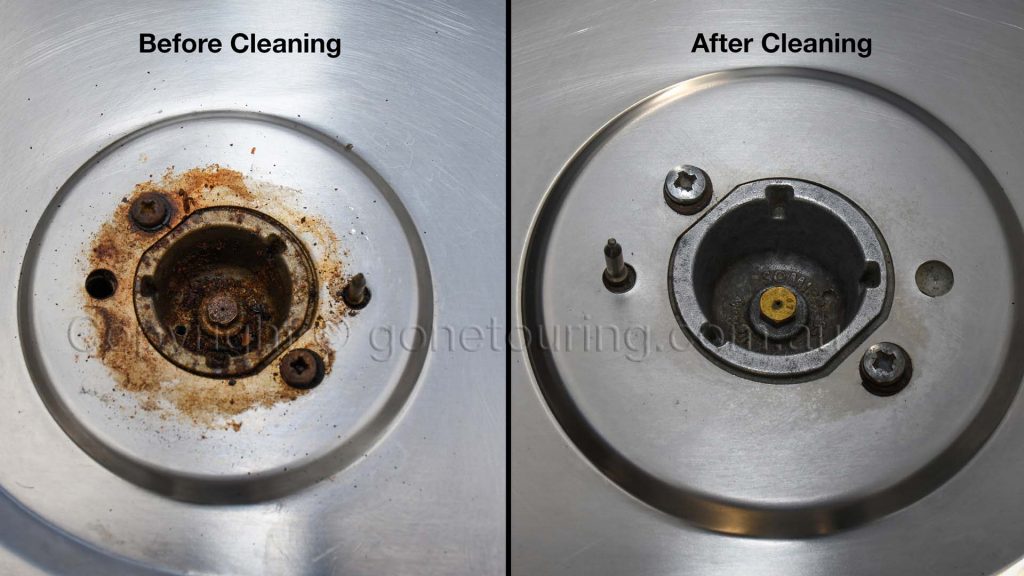
It is a simple operation that requires removing the burner tops and cleaning any debris around the burner, removing the jet to clean the hole and flushing any debris out of the gas line while the jet is out.
Remember I said earlier that used campers often come with few extras, and thankfully this MDC Venturer came with RAAWCON & carabiner upgrades to the annex poles. There are a godsend! They make setting up the annex a quick and easy task. While on the topic of the annex, there was a plethora of poles in the pole box and a faded photocopy diagram of how they all connect together. My decision to set up the camper at home before setting off on a camping adventure paid big dividends, primarily as the challenge of sorting all the poles out was rather time-consuming. While the entire camper was still pitched, I took the opportunity to colour code the poles with insulation tape. This exercise proved fruitful as our setup time significantly improved. The MDC website houses a comprehensive range of short videos that show how to operate most parts of the camper, including the setup.
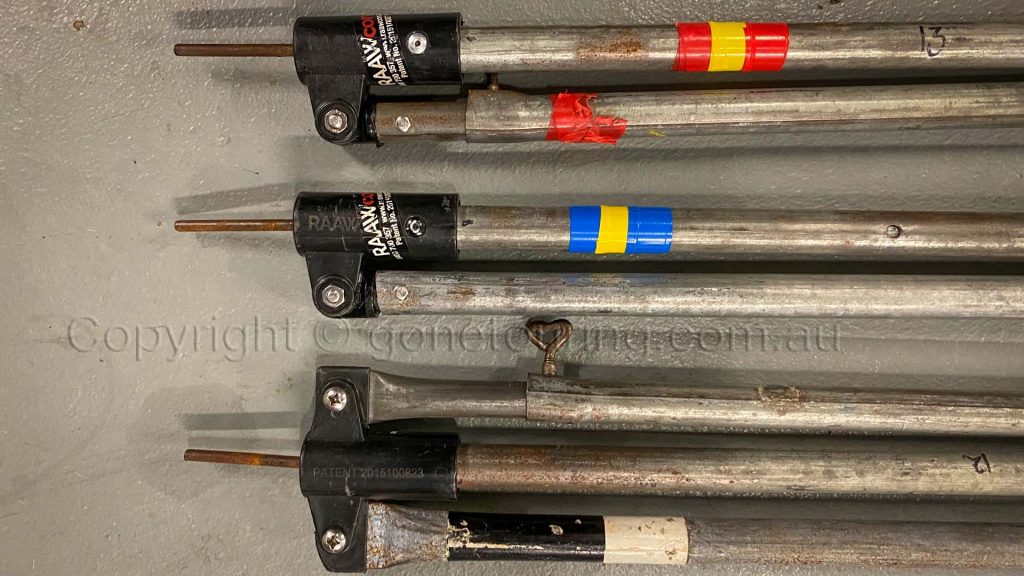
Thankfully this MDC Venturer came with RAAWCON & carabiner upgrades to the annex poles.
We had budgeted to fully service the running gear, including replacing the wheel bearings of the camper trailer as a matter of course, regardless of their condition. Coming from a trucking background, I quickly learnt many years ago that preventative maintenance carried out at home is far more economical than paying for inconvenient breakdowns and repairs while on a trip. The MDC Venturer Camper trailer has 12-inch hubs, commonly shared across a range of trailer brands in this class. Consequently, running gear parts like wheel bearings are easily obtained and not too pricey. I managed to source quality inner and outer bearing plus a seal for $70 per side.
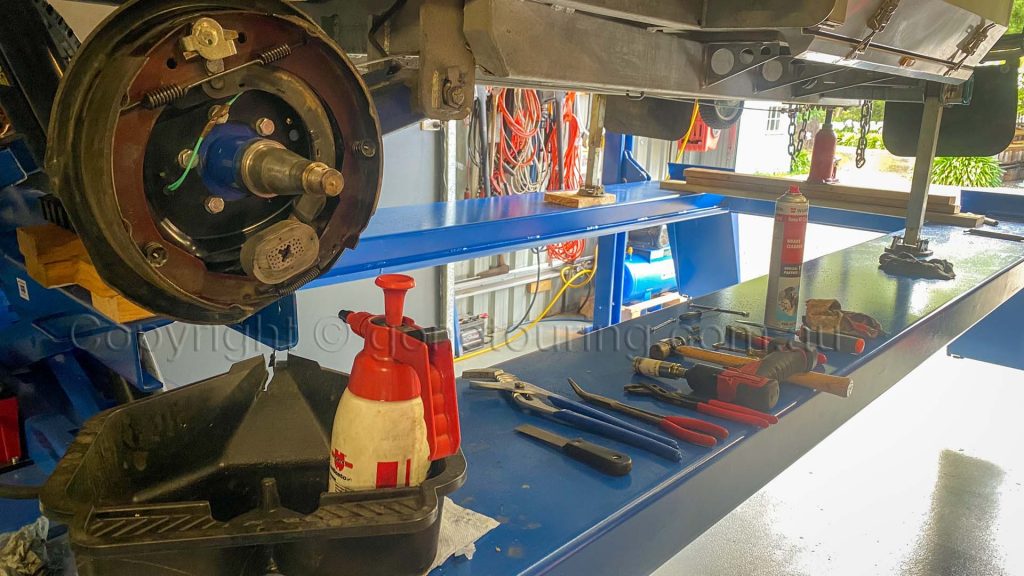
Once I had the MDC Venturer up on the hoist, I quickly discovered why the brakes didn’t function at all. In fact, the wheels still freely rotated with the hand brake lever pulled up tight. Because somebody had wound off the brakes at some point in their life, a very long time ago, and the brake adjuster seized. Furthermore, the wires to one of the brake magnets had broken off a long, long time ago, judging from the corrosion at the end of the wire. Replacement electric brake magnets to suit 12-inch off-road wheels retail for $85 per side, so they are reasonably priced, and if the wheel hub and brake assemblies get serviced regularly, they should last for thousands of kilometres.
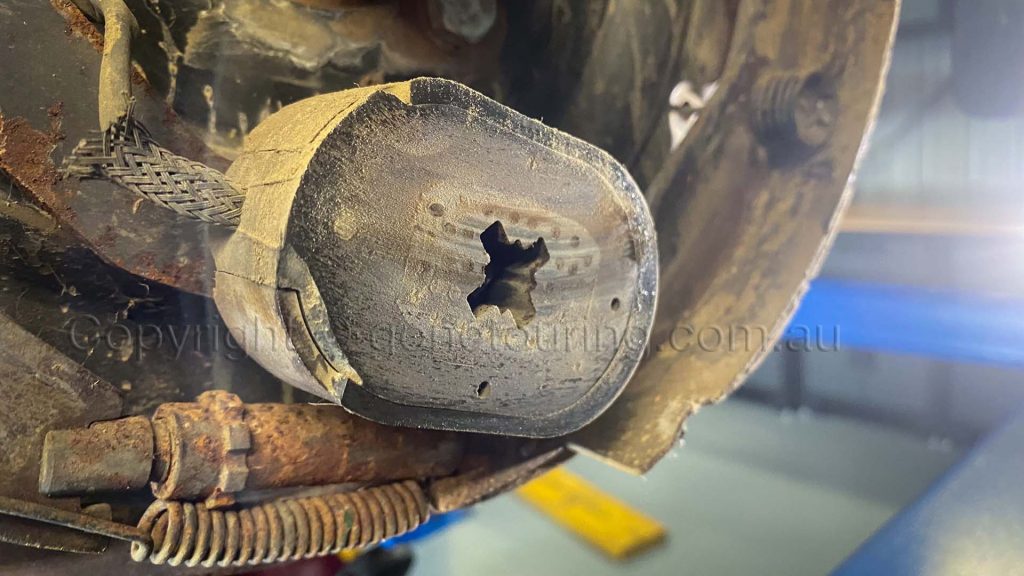
Somebody had wound off the brakes at some point in their life, a very long time ago, and the brake adjuster seized.
If I may offer a serious bit of advice here. If you’re not qualified to repair brakes, then don’t. Paying a couple of hours of labour for a trained professional to properly service your tailer’s wheel hubs and brakes is a sound safety investment and will guarantee your trailer brakes function correctly.
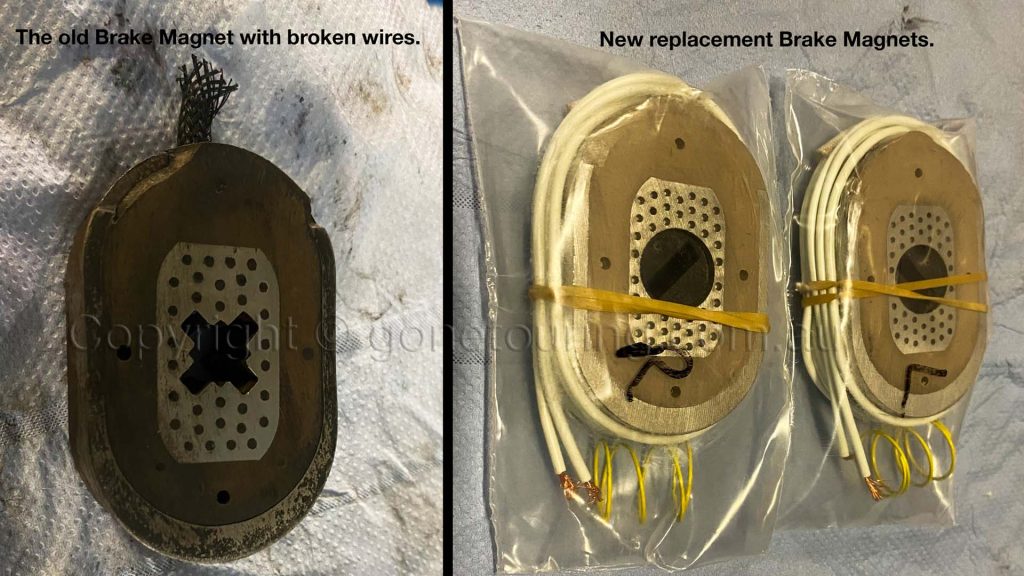
While the trailer was in the workshop, I added a 1500-watt inverter which is more than powerful enough to charge computers, power tools and run the all-important hairdryer. As this is an older and well-travelled camper, a thorough investigation of the electrical system and wiring harness proved a very worthwhile exercise. Overall, the MDC wiring appeared in good condition, but the main leads on the drawbar were showing signs of extreme wear, no doubt from a constant pounding of rocks and road debris over the years. Quality heavy-duty 7-core trailer wire is relatively inexpensive per meter. Consequently, while the trailer was up in the air, I replaced the main electrical light lead and Anderson Power lead from the drawbar to the junction box, then covered the exposed leads with two layers of conduit to reduce stone damage in the future. I phoned MDC’s parts outlet, and they were more than helpful with advice and carried the couple of new circuit breakers I required in stock. They arrived a couple of days later in the post.
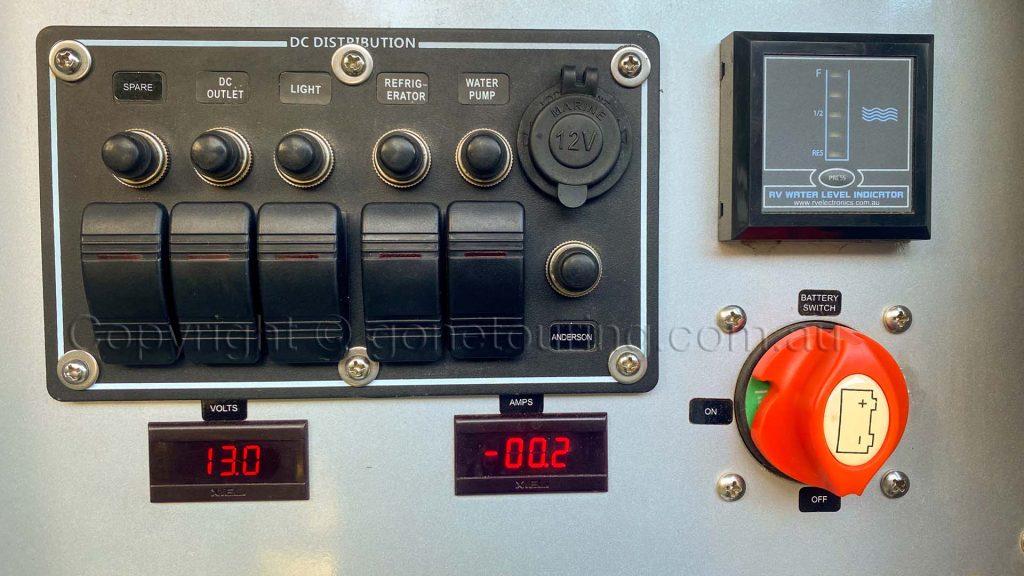 It’s not essential to the trailer’s operation, but it only takes a few minutes to apply some polish to the rusty hub caps to bring them back to new.
It’s not essential to the trailer’s operation, but it only takes a few minutes to apply some polish to the rusty hub caps to bring them back to new.
The stainless steel 4-burner gas stove looked in excellent condition. But when I lit each burner, some of the flames were smaller than they should be with an uneven pattern. There is no time like the present to have the gas stove serviced. It is a simple operation that requires removing the burner tops and cleaning any debris around the burner, removing the jet to clean the hole and flushing any debris out of the gas line while the jet is out. There is no doubt the extra effort and investment in the workshop bringing the trailer’s running gear back to the new condition will undoubtedly pay dividends in the long run.
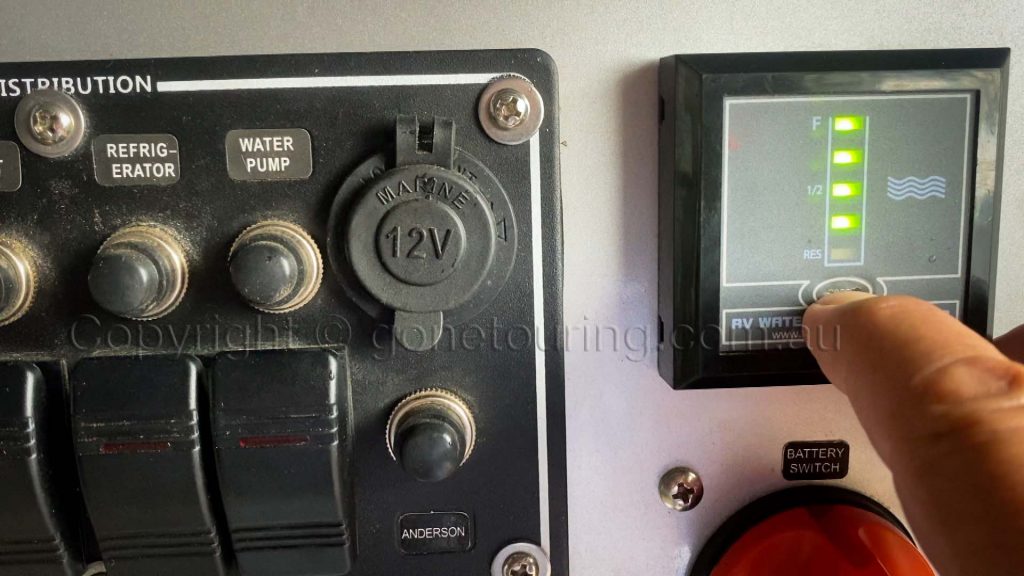 Verdict
Verdict
We’ve been on several camps along the east coast of Tasmania in varying weather conditions, and the camper has indeed worked a treat. Set up wise, the MDC Venturer is not difficult, and it helps if you get yourself into an organised, systematic routine. Mind you, our routine starts with how we pack the camper up and store the poles. The most time-consuming part of the setup is levelling the trailer, and it’s worth every minute to do this right. Once the trailer is level, it takes about five minutes to open the camper and another 15 minutes to set up the awning and peg it all down.
One feature this older MDC Venturer has over some modern campers is that the awning extends the entire length of the camper trailer when fully extended. Importantly it covers the kitchen and galley area. So on wet days, you can operate the pantry and kitchen without getting wet. Some current model campers don’t provide this luxury. While on the subject of wet days. We’ve encountered some rough days with easterly winds gusting to 50kph rolling in from the Tasman Sea. If it weren’t for the constant racket of the pounding waves outside, inside the camper, you barely know there’s a breeze at all outside. It is very sturdy when pegged down.
The standard mattress is not the most comfortable. In fact, it provides very little support. We addressed this problem with the addition of a self-inflating mattress. To complete the whole off-grid camping experience, we take a portable instant gas hot system and Porta-Potti with a pop-up ensuite.
Related Reading
Cosy Corner South – Free Camping with Caravan access
Mersey 2.4 Slide-On Camper review
RA Rodeo Review
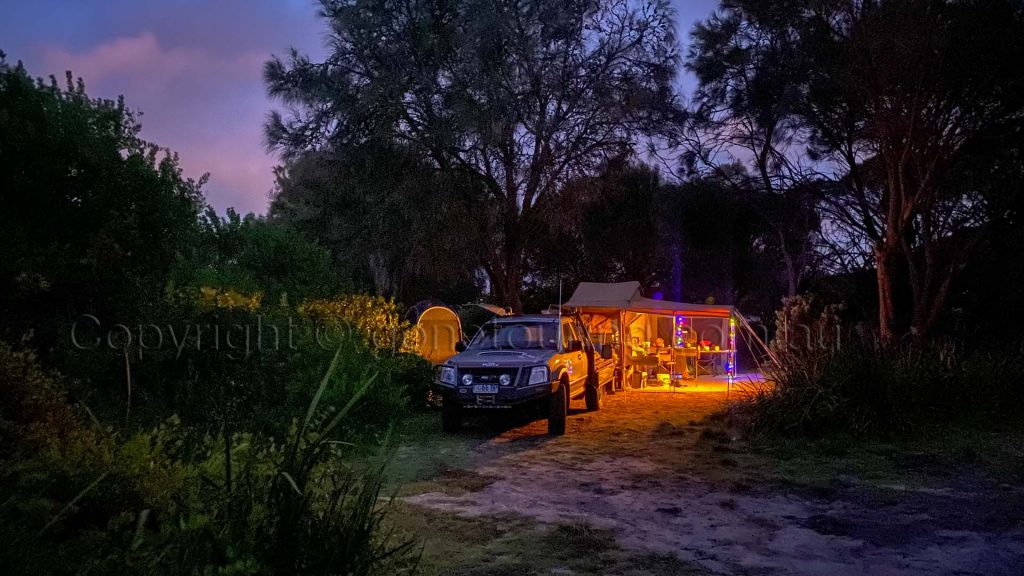 My wife drapes small coloured fairy lights down the poles to make the camp homely at night. They’re terrific as they provide enough illumination to see the poles in the dark, and the multicolour effect does not attract insects.
My wife drapes small coloured fairy lights down the poles to make the camp homely at night. They’re terrific as they provide enough illumination to see the poles in the dark, and the multicolour effect does not attract insects.
Overall, we’ve been more than impressed with our ‘used’ 2014 MDC Venturer. It’s certainly a camper trailer that has withstood the tyranny of long-distance travel. To date, I’ve had no issue sourcing parts at affordable prices. Although now the running gear is rebuilt, there is no reason this camper won’t do another lap two of the continent. Our theory of investing in a used camper trailer, much like the seller we purchased it from, was a stepping stone into the world of off-road campers. It allows us to experience off-camping and discover if this is a path we wish to travel for only a modest investment.
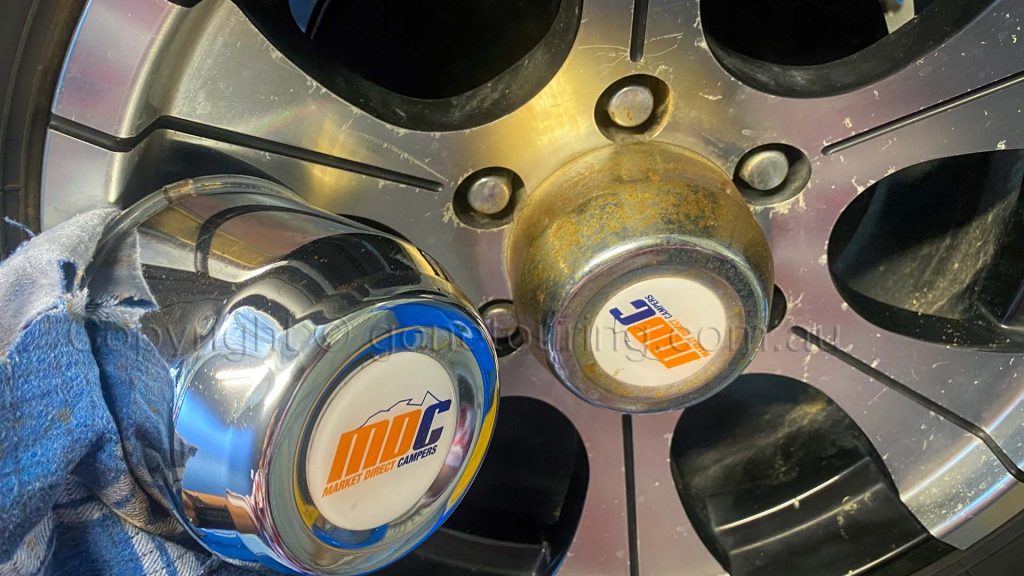 Used Camper Trailer Buying Advice
Used Camper Trailer Buying Advice
Spend time to do your due diligence when looking at used camper trailers. Then, once you have narrowed down your search, insist on a pre-purchase vehicle inspection from a reputable dealer. These inspections are one of the wisest investments you’ll make. It will clearly indicate the vehicle’s condition and what expenses it will require to ensure it is roadworthy and reliable. Finally, invest in a REVS check to ensure that it hasn’t been rebirthed, written off, or has financial securities.
When you go to inspect the camper;
- Set it up fully on inspection. If the seller is unwilling to set up the camper, then chances are something is wrong with it – that’s the cue to walk away.
- Check the water – regardless of how clean, thoroughly clean the tank yourself. If the water has an opaque stained colour, negotiate for a new tank and water line replacement.
- Check that all the trailer lights working?
- Check the condition of the tyres, and the tread wear is even?
- Check that the appliances operate correctly – if they don’t, negotiate their replacement.
- Check for mysterious bolt-holes – what function did they perform, is something missing?
- Inspect the chassis underneath, and look for irregular water stains or weld marks that indicate major repair work.
- Question any newly-painted surfaces?
- Does the camper trailer have a service history?
- Check the battery voltage – if it’s fully charged, it will read approximately 12.75V at 12V
